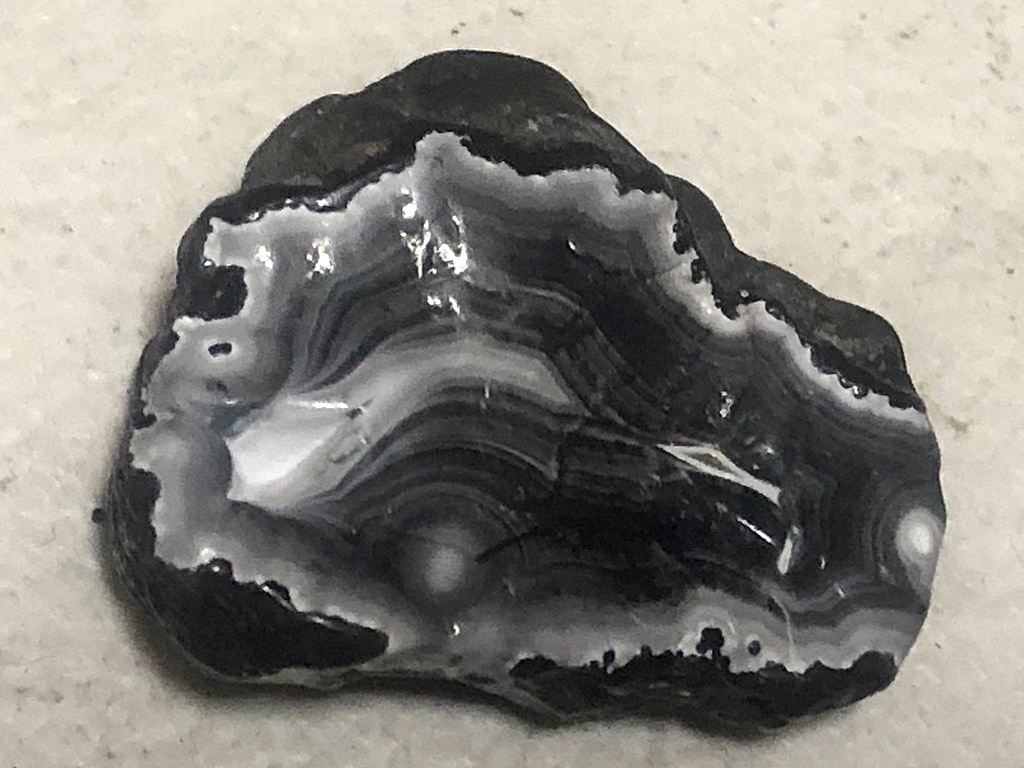Onyx
When you’re talking about pretty minerals and gemstones, it’s hard to get away from quartz. And if it’s not clear, then it’s probably the kind of quartz called chalcedony. Onyx is a type of chalcedony that has parallel bands of color that can be black and white or red/brown and white. The red/brown version, often called “sardonyx” (named after the city of Sardis in Turkey), is actually more common, but you won’t usually see it in stores. The black and white variety is the one that people sell most of the time and what’s usually considered onyx. However, “black onyx” used in jewelry is usually just black, with no white parts, and for a lot of people, black onyx is the only kind of onyx they’ve ever seen or heard of. As black as it might seem, a lot of the onyx you’ll find isn’t naturally black but is made black by dyeing lighter colored agate. The process of making black onyx out of agate has been around for several thousand years (!), and has used a weird combination of honey or sugar, acid, and heating–who figured that out? (Answer: The Ancient Egyptians.)
| Formula | Group or Type | Shape | Hardness | Specific Gravity | Streak | Luster |
|---|---|---|---|---|---|---|
| SiO2 | Quartz: Chalcedony | — | 7 | 2.6–2.7 | White | Vitreous |

